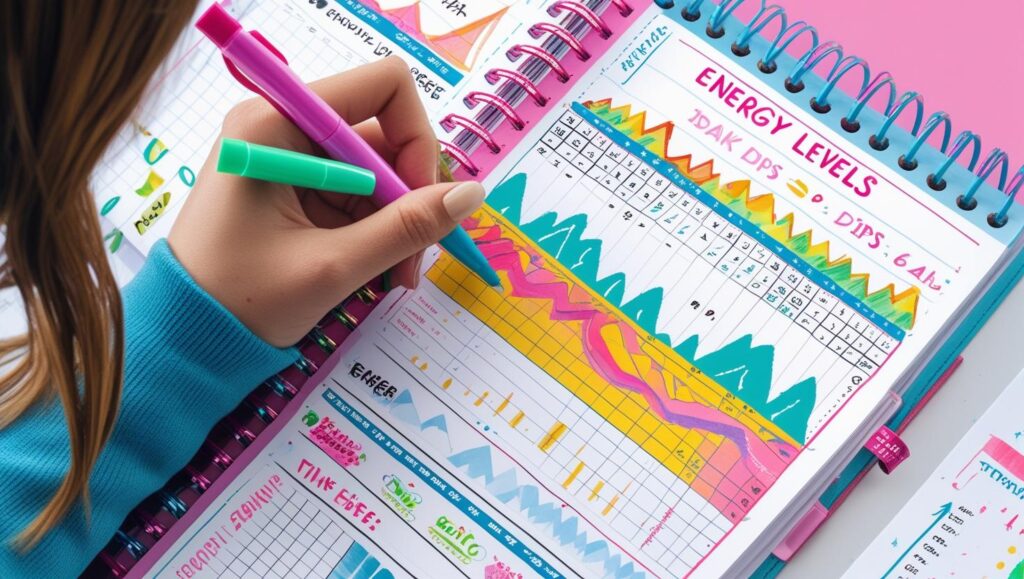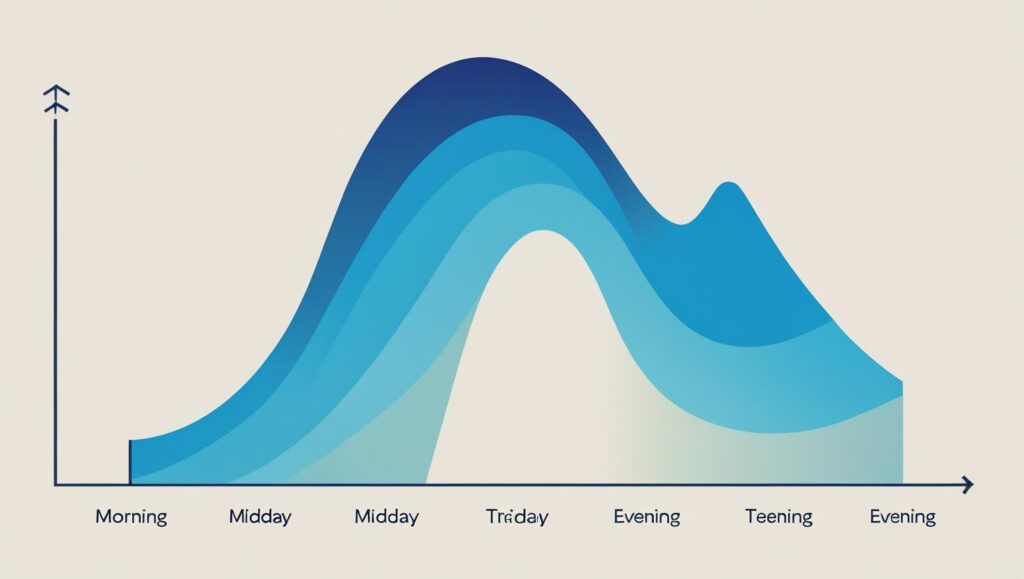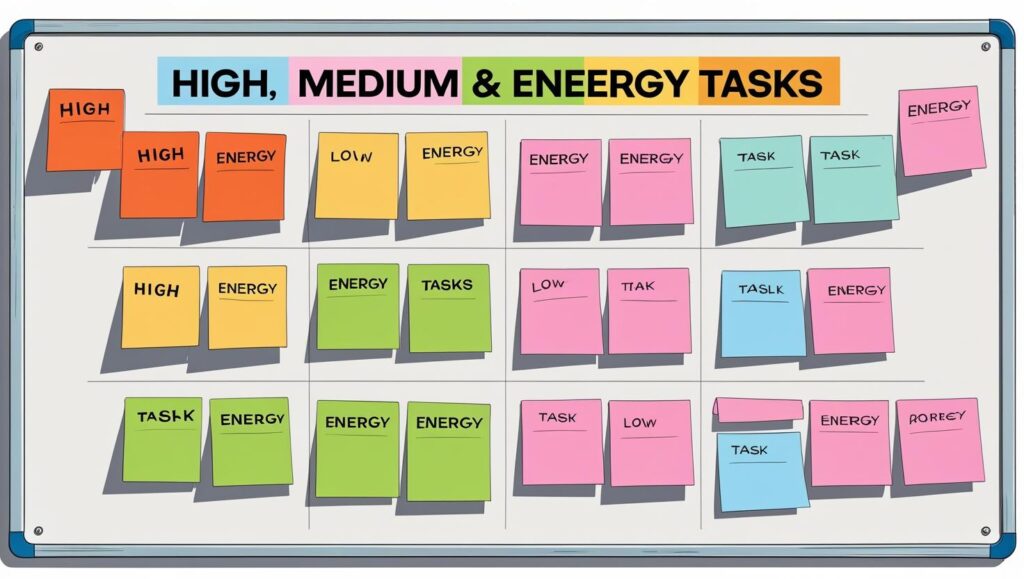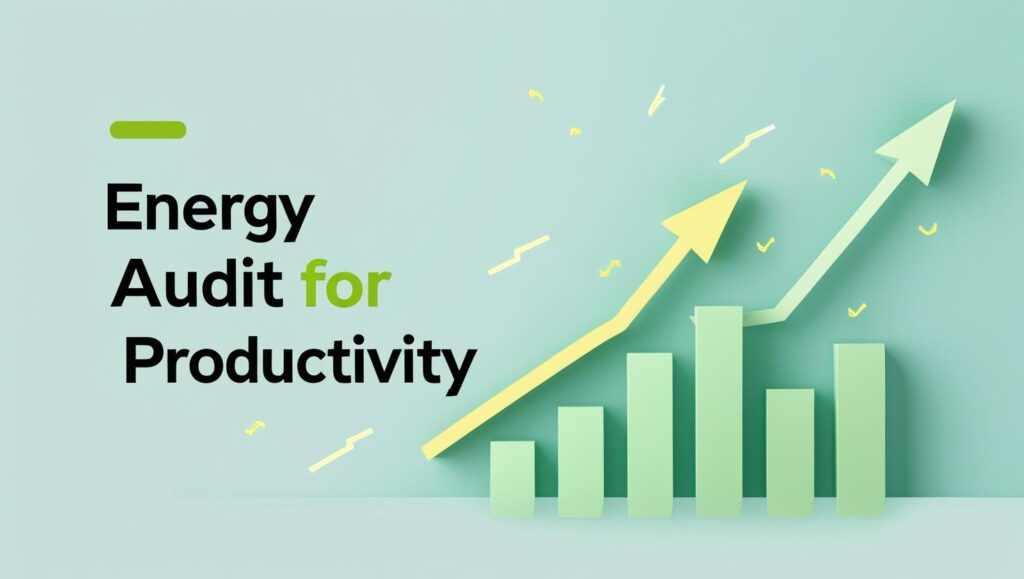Introduction
Ever feel like you’re working hard but getting nowhere? You’re not alone. Most people try to manage their time, but the real key to getting more done lies in managing your energy—this is why learning how to do an energy audit for productivity is so important.
Start small. Track for a few days. Adjust as you go. In just a few weeks, you’ll feel more in control, focused, energized, and truly alive with renewed purpose.
If you’ve never heard of this before, don’t worry. In this post, you’ll learn how to do an energy audit for productivity, why it matters more than just time management, how it affects your focus and energy levels, and exactly how to apply it for lasting, meaningful results in both work and life.
Let’s dive in.
What Is an Energy Audit?
In simple terms, an energy audit is a process of tracking how, when, and where your personal energy fluctuates during the day.
Just like a business conducts a financial audit to see where money goes, you’ll conduct an energy audit to understand how your energy is spent — and wasted.
Instead of relying on motivation or caffeine, you’ll identify patterns and learn how to do an energy audit for productivity to optimize your life around your natural energy rhythms.
Why You Need an Energy Audit
We live in a productivity-obsessed culture. But hustle without direction just leads to burnout.
Here’s why learning how to do an energy audit for productivity is a game-changer:
- 🔋 You gain clarity on tasks that drain or recharge you
- 🧠 You learn how to align deep work with peak energy
- ⏱️ You stop wasting your best hours on low-priority tasks
- 💡 You build a system that supports long-term performance
This isn’t just self-care — it’s strategic self-awareness.
An energy audit also helps you stop living on autopilot and start making conscious, aligned decisions. You can read more at how to stop living at autopilot.
Step-by-Step: How to Do an Energy Audit for Productivity
Step 1: Track Your Energy in Real Time (for 3–5 Days)

Start by noting your energy levels every 60–90 minutes throughout your workday. A simple 1–10 scale works:
- 1 = Exhausted
- 5 = Meh
- 10 = Fully energized and focused
Also jot down:
- What task you were doing
- Where you were
- How you felt mentally and physically
You can use a spreadsheet, journal, or a simple time-blocked calendar.
📌 Pro Tip: Don’t try to change anything yet. Just observe.
Step 2: Identify Patterns and Peaks

After 3–5 days of tracking, look at your notes:
- When do you feel most alert?
- When do you start to crash?
- Are there specific tasks that drain or energize you?
You’ll likely notice a daily energy curve — maybe mornings are your sweet spot, or maybe you’re a post-lunch sprinter.
Use this insight to plan your day accordingly.
Step 3: Categorize Tasks by Energy Demands

Not all work is created equal.
Sort your to-dos into three categories:
- 🔥 High-energy tasks: Deep work, strategy, problem-solving
- ⚙️ Medium-energy tasks: Admin, planning, meetings
- 🧘 Low-energy tasks: Email replies, file organization, routine updates
Now comes the magic — match these to your natural energy patterns.
If your peak is 9 AM to 11 AM, that’s your window for deep, focused work. Don’t waste it on Slack messages.
Step 4: Eliminate or Delegate Low-ROI Energy Drains
Some tasks drain you more than they’re worth. Time to trim.
Ask yourself:
- Is this task necessary?
- Can I automate it?
- Can someone else handle it?
This is where many people free up 20–30% more energy without working harder.
Step 5: Build a New Routine Around Energy, Not Time
Now that you understand how to do an energy audit for productivity, apply what you’ve learned to design your schedule:
- Block peak energy hours for your most important work
- Group similar tasks together to avoid switching costs
- Add recharge breaks before your typical energy dips
This isn’t rigid time blocking — it’s flexible energy alignment.
This isn’t a one-time fix — it’s a foundational strategy for sustainable performance. You can check out our article on build momentum.
Bonus: Use Tools to Support Your Audit
Here are some tools that can make your audit more effective:
- Rise Science (https://www.risescience.com/) — Tracks sleep and energy rhythms
- RescueTime (https://www.rescuetime.com/) — Shows how you spend digital time
- Notion or Excel — Custom templates to track energy manually
Remember, it’s not about perfection. It’s about consistent pattern recognition, smarter energy choices, and making better decisions over time.

Final Thoughts
Learning how to do an energy audit for productivity is like giving yourself a custom user manual tailored to your mind and body. You’ll stop battling your biology, reduce unnecessary stress, and start working with your natural energy rhythms instead of constantly pushing against them.
This isn’t a one-time fix — learning how to do an energy audit for productivity is a foundational strategy for sustainable performance and long-term success.
Start small. Track for a few days. Adjust as you go. In just a few weeks, you’ll feel more in control, focused, energized, and truly alive.
